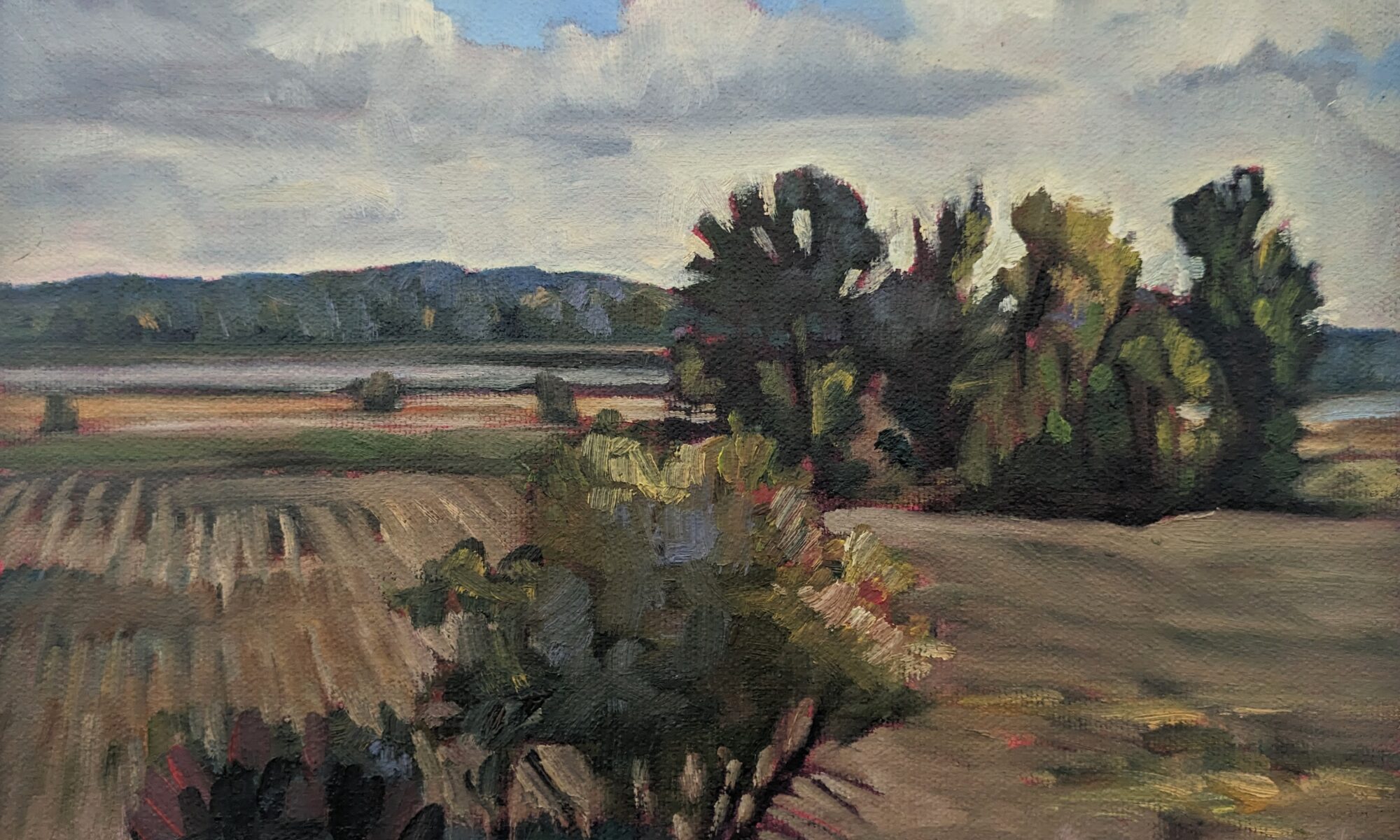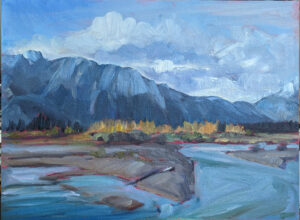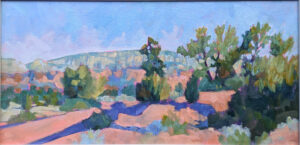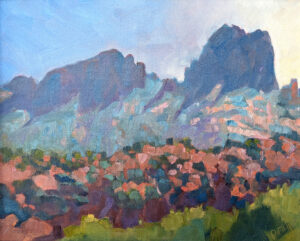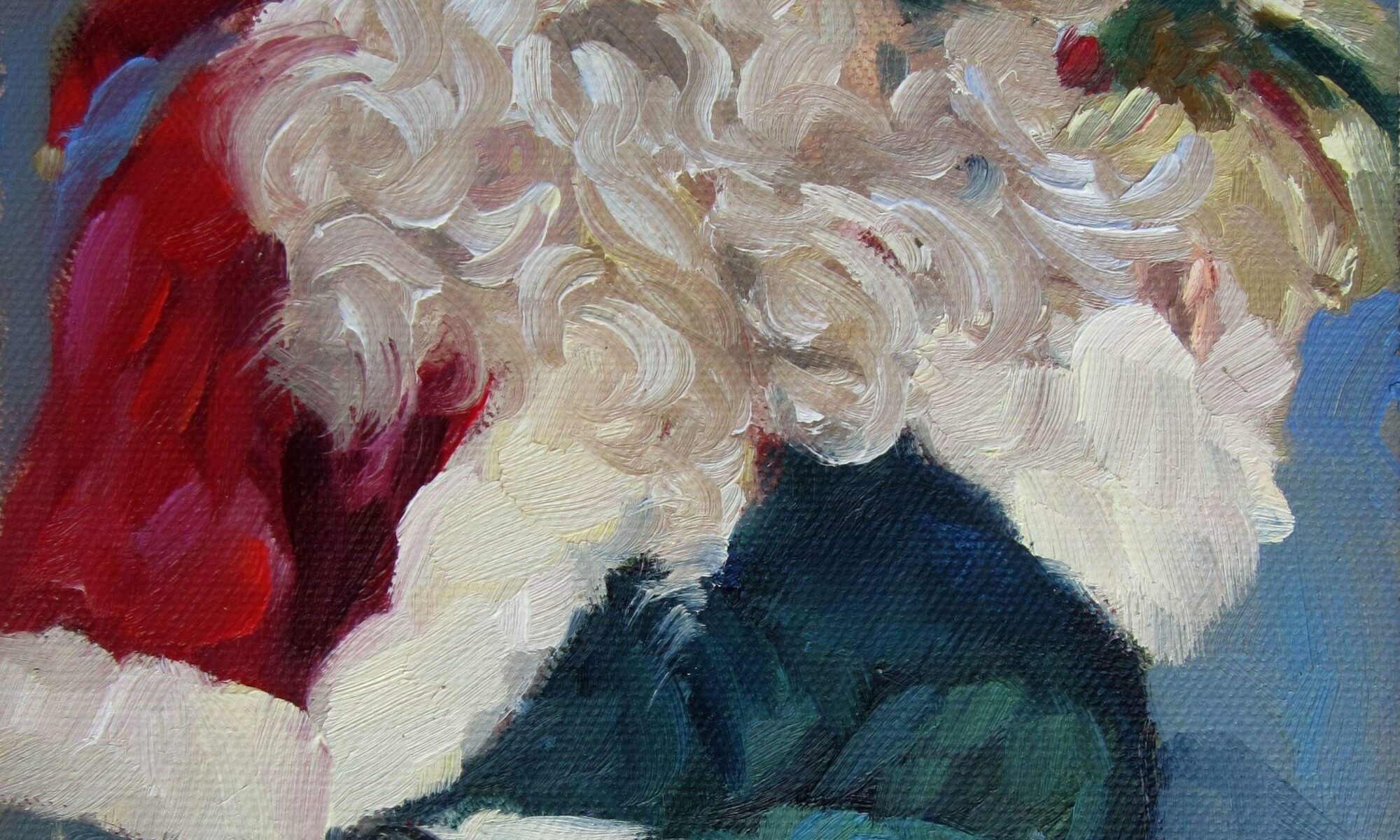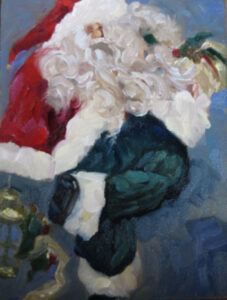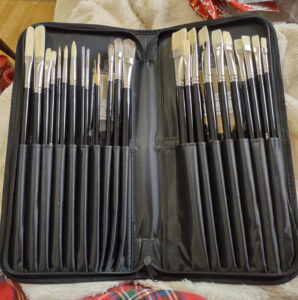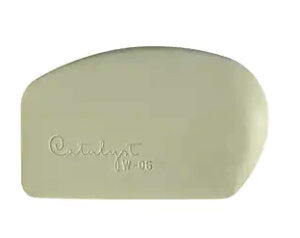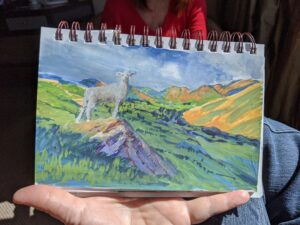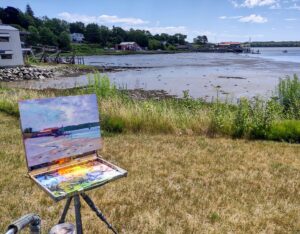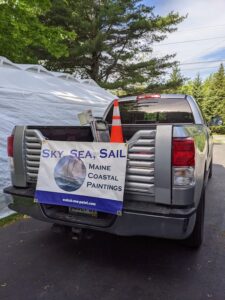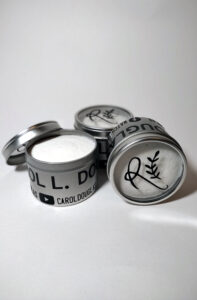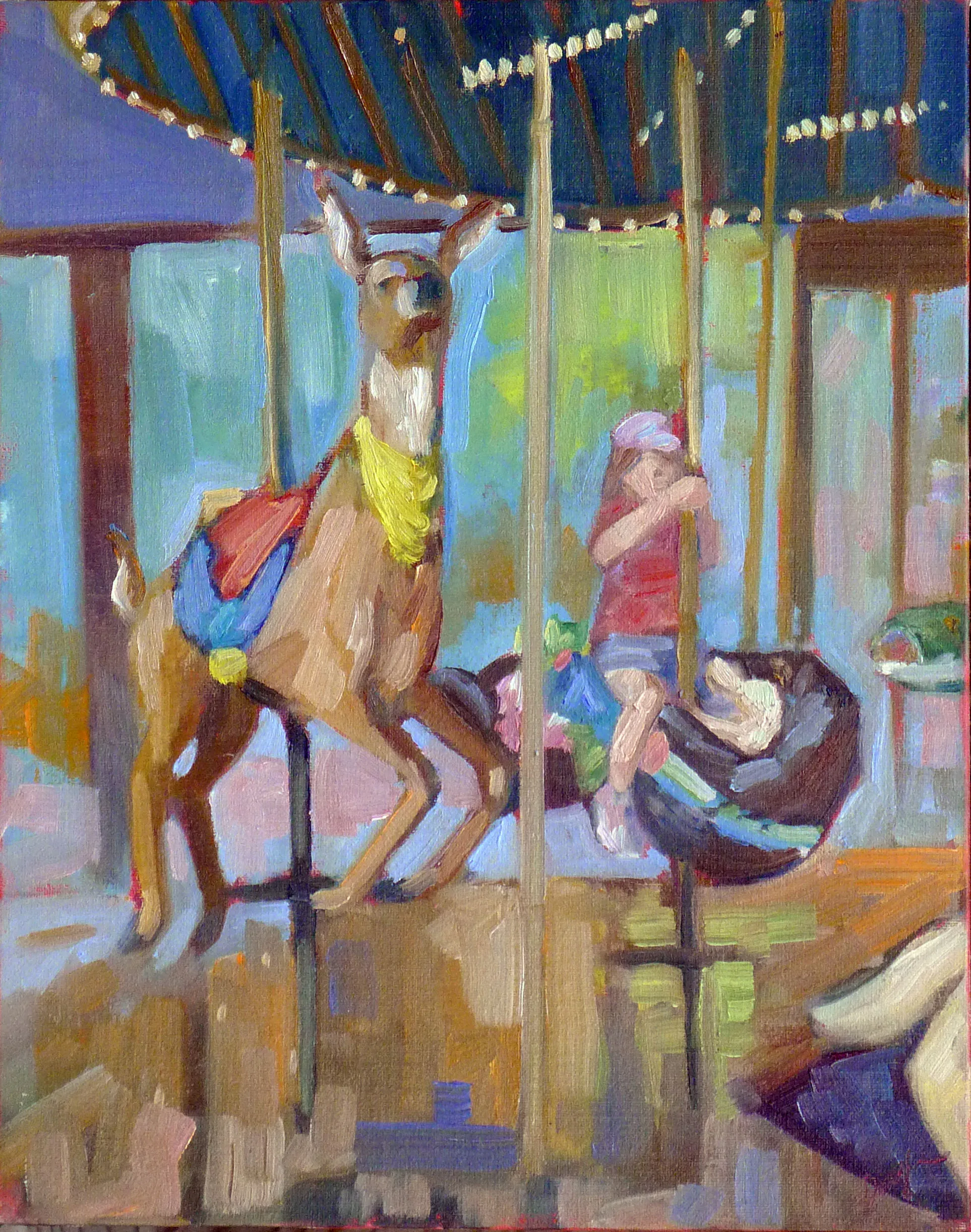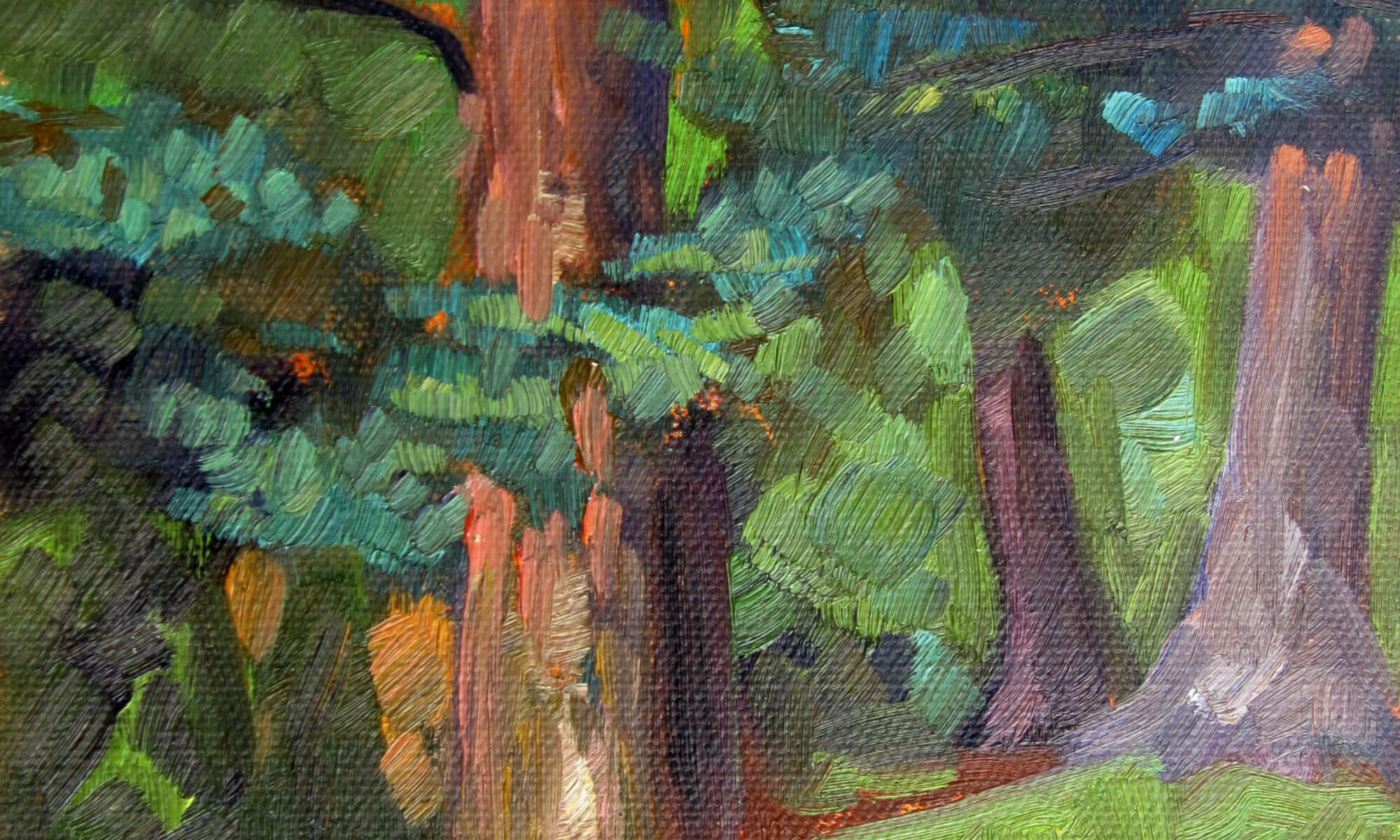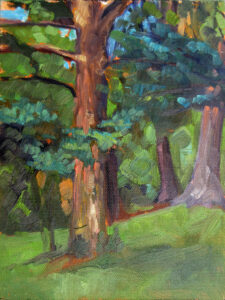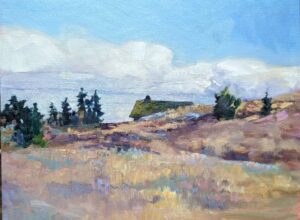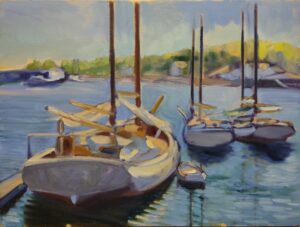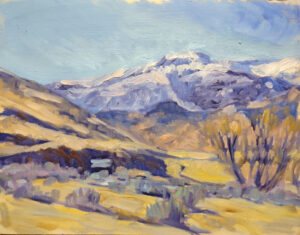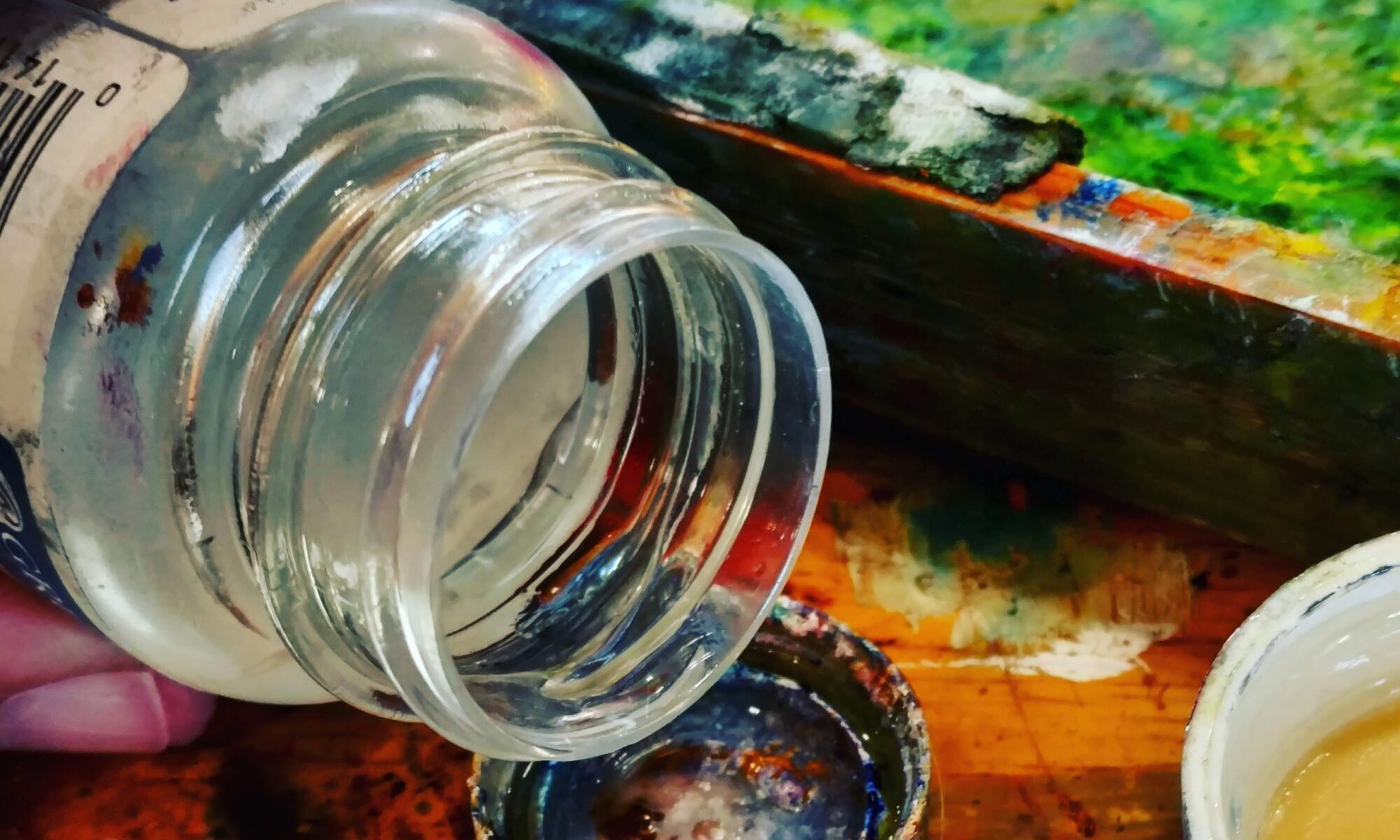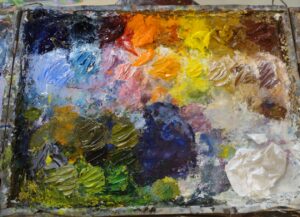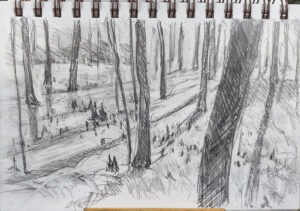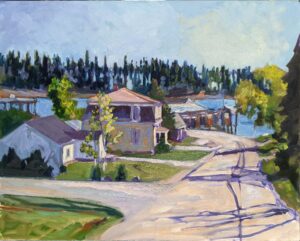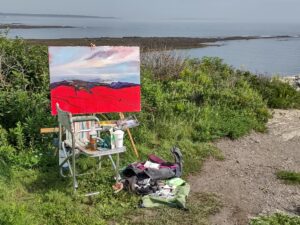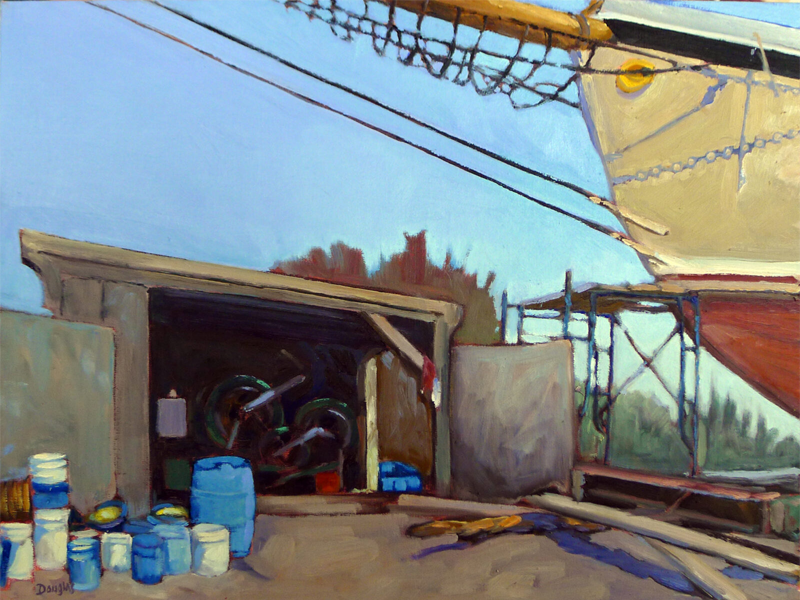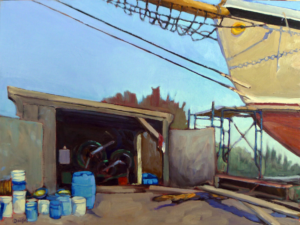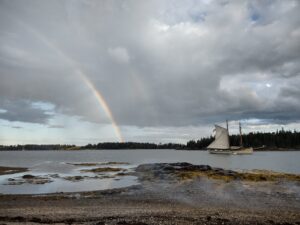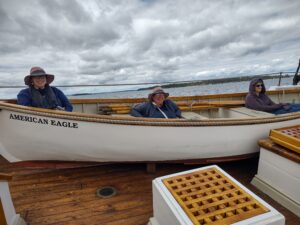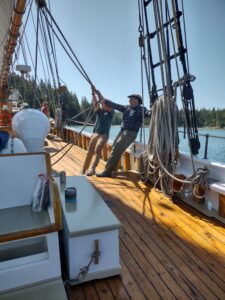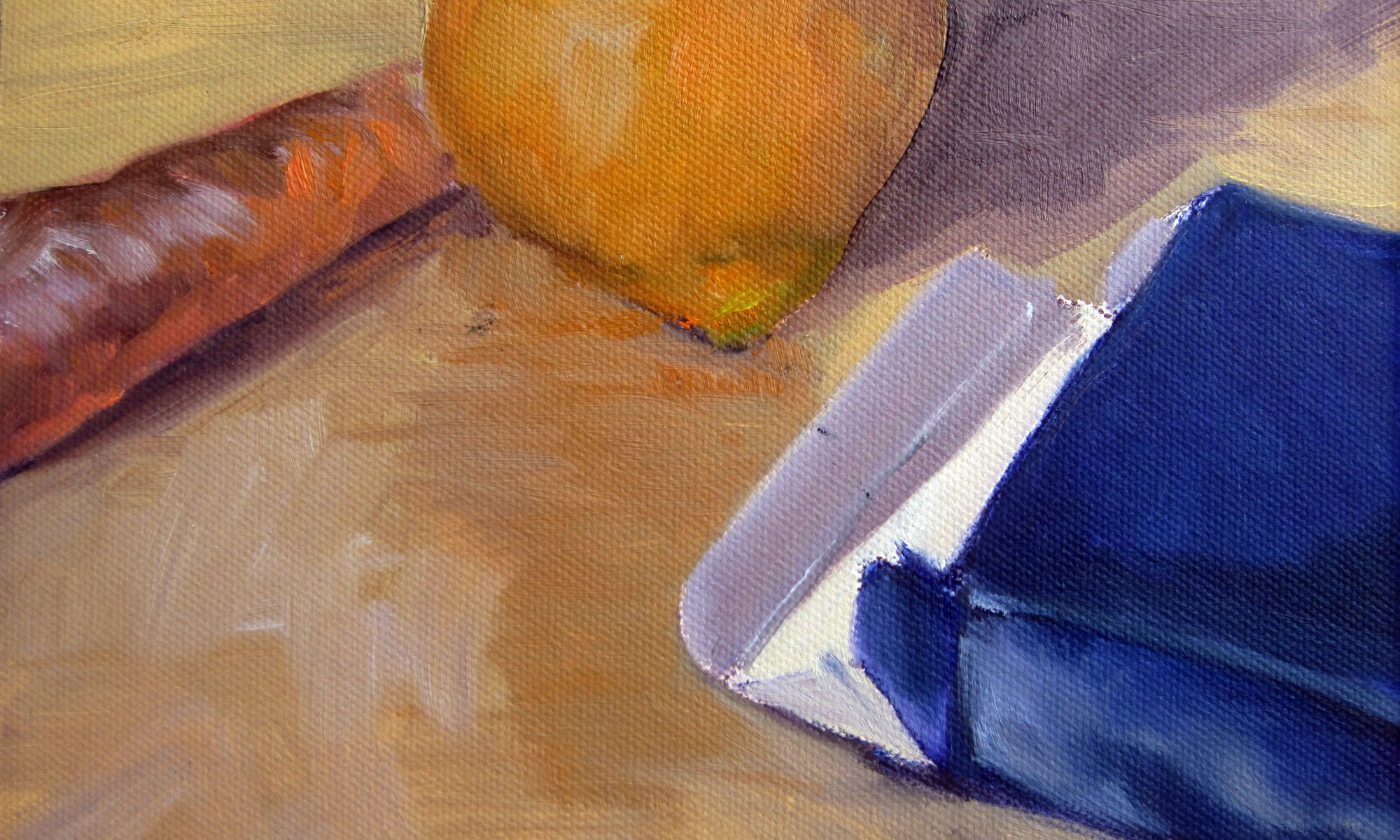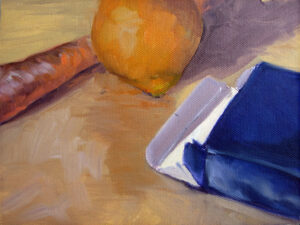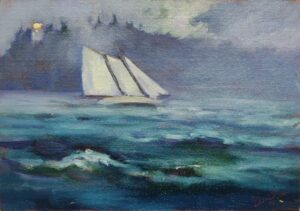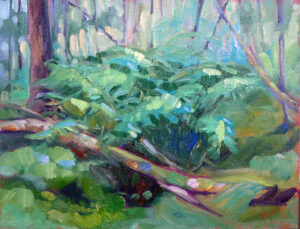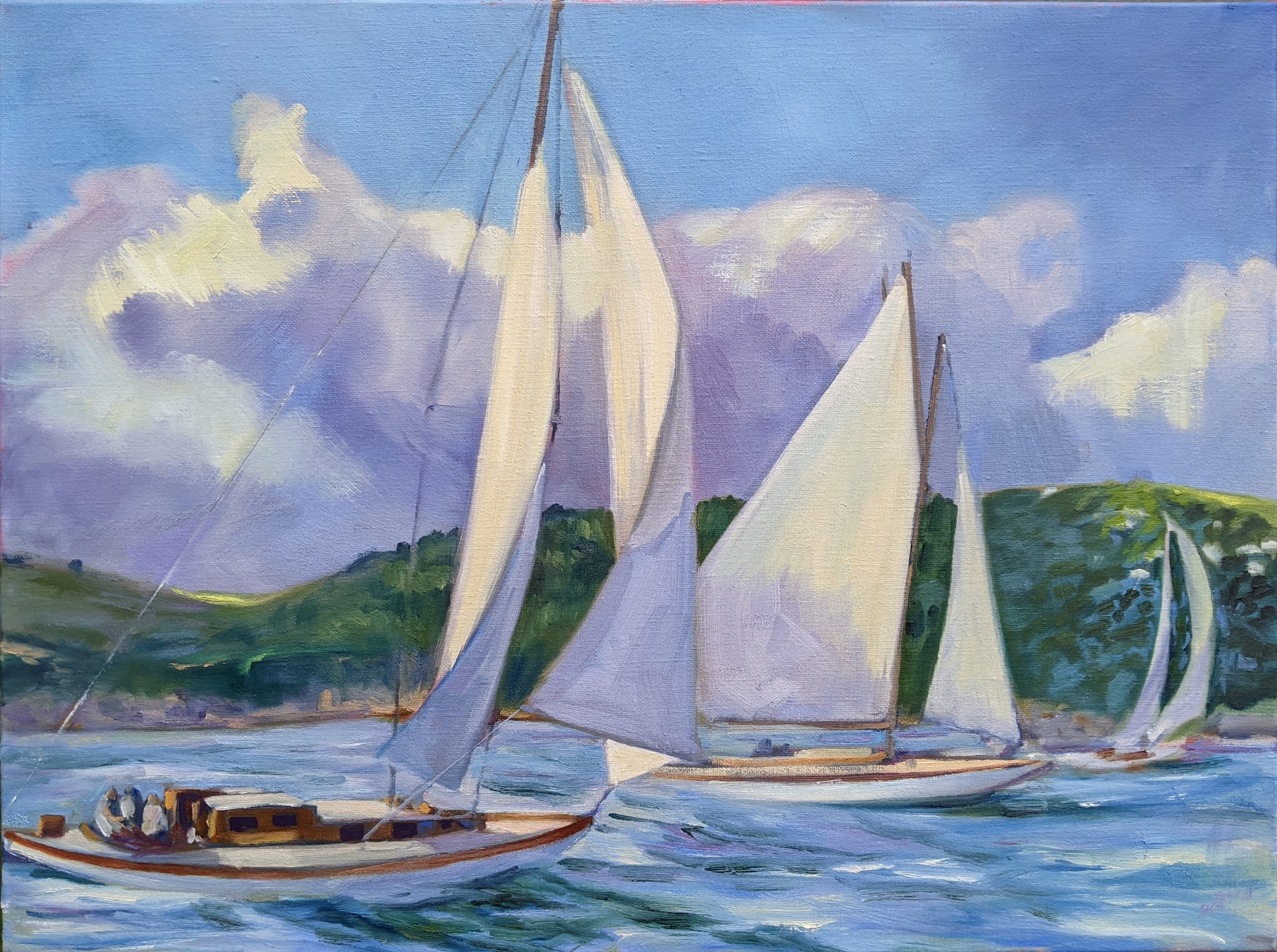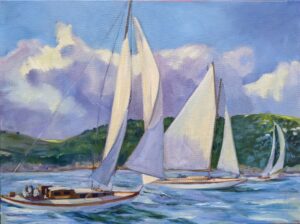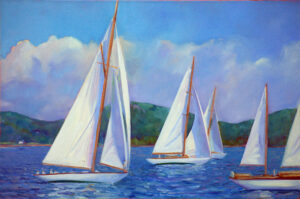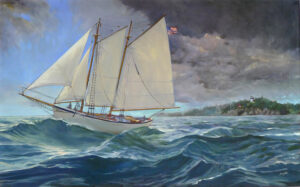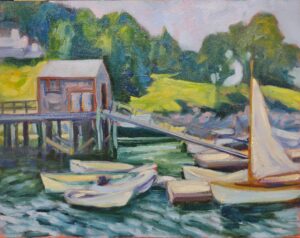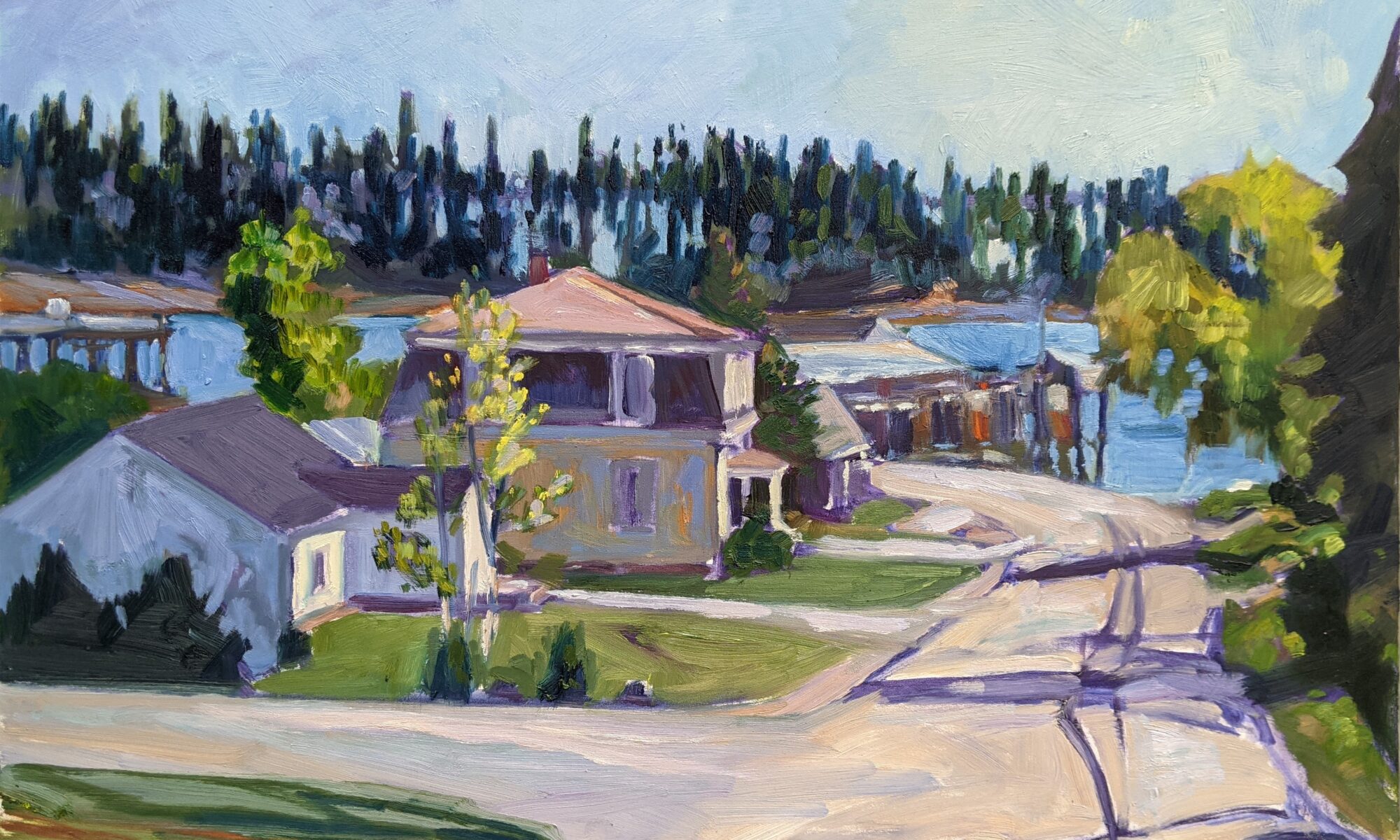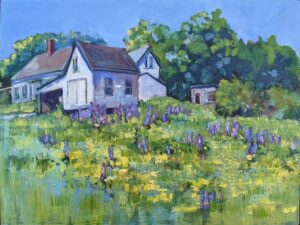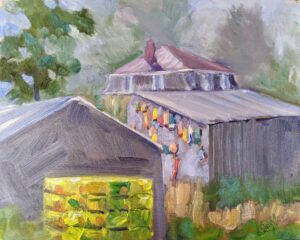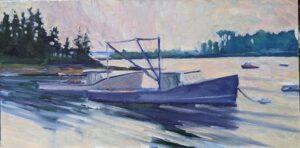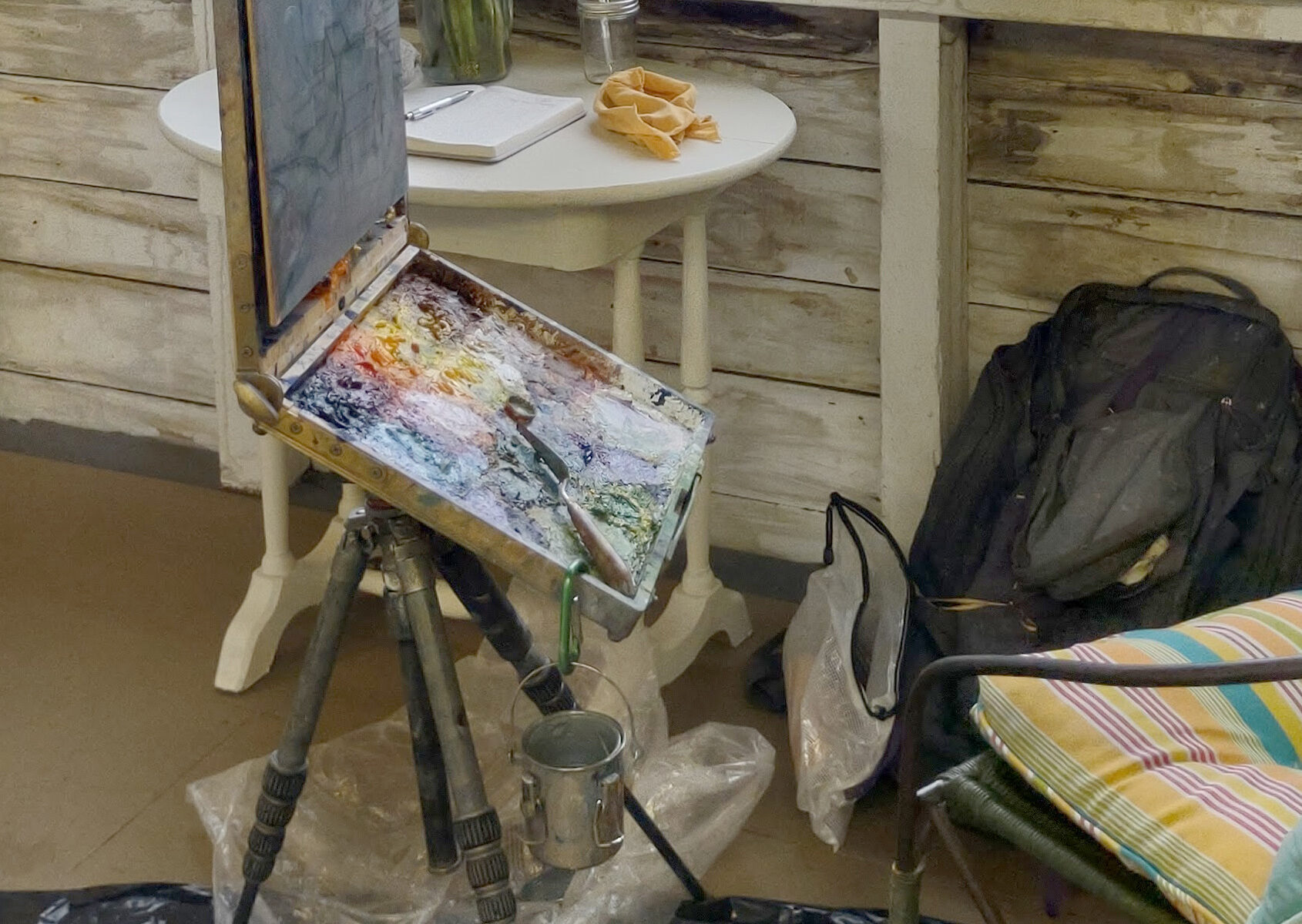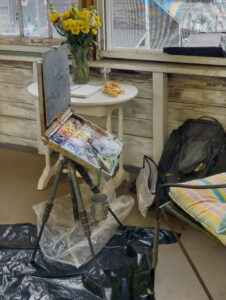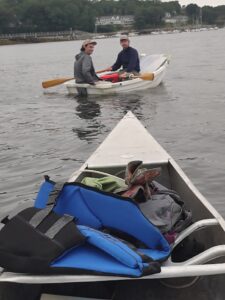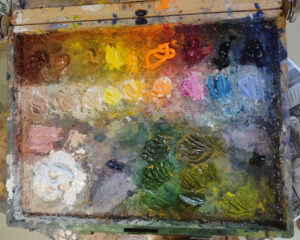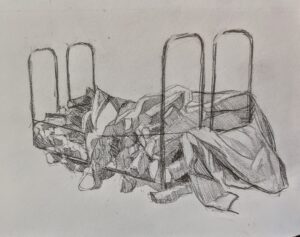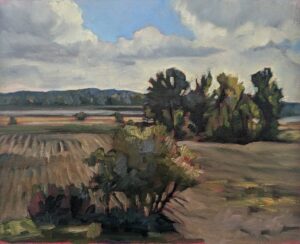
Frequently, someone will tell me, “I love art but I can’t draw a straight line,” or, “You are so talented.” I don’t know any artists who can draw a straight line; we use rulers just like everyone else. And ‘talent’ really isn’t the deciding factor in whether a person can paint or not; what makes an artist is a passion for making art.
Having said that, I appreciate all of you who are fans of art but don’t want to do art. We can’t all be nurses, computer programmers, or carpenters, but we call on their services. Our economy depends on that. Similarly, artists depend on you, our collectors.
Since I stopped showing in galleries in 2020, I’ve had much more contact with my collectors. I really enjoy the interactions. Art is a form of communication, so the viewer also brings something to the table. Your questions, your comments, even the things you love or don’t like tell me a lot.
I’m staying at my daughter’s house. As I type this, I can see three paintings: one from our Alaska adventure and two by other artists. Mary was raised in the milieu of artists and art. She understands the difference between real art, sweatshop knock offs, and mass-produced prints. She understands why a well-chosen painting will wear better than other decorations.
That’s an advantage over most of her peers. I’ve talked to young people who point out that they could buy an entire room of TJMaxx ‘art’ for what one of my paintings costs. They haven’t yet figured out the advantages of choosing quality over quantity. I was young once too, and I too didn’t think I could afford good things. But eventually we all outgrow that.
You, my collectors, are the people who’ve made this career possible over the past 26 years. Thank you.
It’s party time!
Those of you who read my newsletter know I’m doing a virtual First Friday on December 1, 2023 at 6 PM EST. But I want to be sure to invite everyone.
This show features paintings of Arizona and Alaska. Move past the radical differences in temperature, and there are surprising commonalities. In addition to a behind-the-scenes look at the paintings, you can share your thoughts, ask questions, and enjoy a suggested wine pairing (BYOB):
Arizona sparkling wines, no pants, on the couch
- Gruet Blanc de Noirs, https://gruetwinery.orderport.net/product-details/1474/NV-Blanc-de-Noirs
- Gruet Brut, https://gruetwinery.orderport.net/product-details/0693/NV-Brut
- Gruet Brut Rosé, https://gruetwinery.orderport.net/product-details/0695/NV-Brut-Rose
Arizona sparkling wines, black tie
- Gruet 2016 Grand Rosé Cuvée Danielle, https://gruetwinery.orderport.net/product-details/1476/2016-Grand-Rose-Cuvee-Danielle
- Gruet 2018 Vintage Sauvage, https://gruetwinery.orderport.net/product-details/1475/2018-Vintage-Sauvage, https://gruetwinery.orderport.net/product-details/1475/2018-Vintage-Sauvage
- Gruet Barrel-Aged Blanc de Noirs, https://gruetwinery.orderport.net/product-details/1581/Barrel-Aged-Blanc-de-Noirs
Arizona still wine, no pants, on the couch
- 2020 Gruet Reserve Chardonnay, https://gruetwinery.orderport.net/product-details/1351/2020-Gruet-Reserve-Chardonnay
- 2022 Reserve Still Rosé, https://gruetwinery.orderport.net/product-details/1740/2022-Reserve-Still-Rose
Arizona still wine, black tie
- 2020 Reserve Cabernet Sauvignon, https://gruetwinery.orderport.net/product-details/1436/2020-Reserve-Cabernet-Sauvignon
Canadian (Niagara-on-the-Lake) still wine, no pants, on the couch
- Konzelmann Estate Pinot Noir, https://store.konzelmann.ca/product/canada-red-
- Konzelmann Estate Chardonney, https://store.konzelmann.ca/product/chardonnay-barrel-aged
Canadian (Niagara-on-the-Lake) still wine, black tie
- Château des Charmes Equuleus, https://www.chateaudescharmes.com/shop/2020-equuleus/
- Château des Charmes Cabernet Ice Wine: https://www.chateaudescharmes.com/shop/2018-cabernet-icewine-375-ml/
- Château des Charmes Vidal Ice Wine: https://www.chateaudescharmes.com/shop/2019-vidal-icewine-375-ml/
Canadian (Niagara-on-the-Lake) still wine, no pants, on the couch
- Konzelmann Estate Pinot Noir, https://store.konzelmann.ca/product/canada-red-
- Konzelmann Estate Chardonney, https://store.konzelmann.ca/product/chardonnay-barrel-aged
Canadian (Niagara-on-the-Lake) still wine, black tie
- Château des Charmes Equuleus, https://www.chateaudescharmes.com/shop/2020-equuleus/
- Château des Charmes Cabernet Ice Wine: https://www.chateaudescharmes.com/shop/2018-cabernet-icewine-375-ml/
- Château des Charmes Vidal Ice Wine: https://www.chateaudescharmes.com/shop/2019-vidal-icewine-375-ml/
Carol’s daily household plonk, no pants, on the couch:
- Red: La Vieille Ferme Rouge 2021, https://www.wine.com/product/la-vieille-ferme-rouge-2021/1190021#
- White: 2021 Anselmo Mendes Contacto Alvarinho, https://www.wine-searcher.com/find/anselm+mendes+contacto+alvarinho+verde+minho+portugal/2021
Sadly, Carol doesn’t have black-tie tastes.
Mocktail
My 2024 workshops:
- Painting in Paradise: Rockport, ME, July 8-12, 2024.
- Sea & Sky at Schoodic, August 4-9, 2024.
- Find your authentic voice in plein air: Berkshires, August 12-16, 2024.
- Art and Adventure at Sea: Paint Aboard Schooner American Eagle, September 15-19, 2024.
- Immersive In-Person Workshop: Rockport, ME, October 7-11, 2024.

